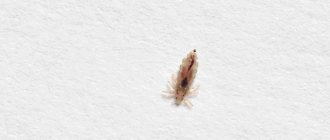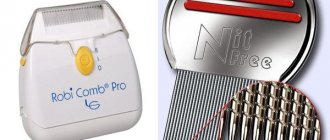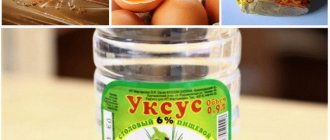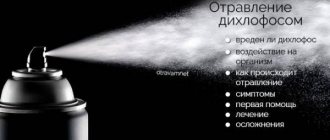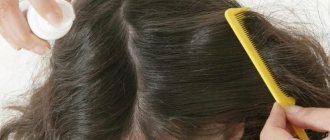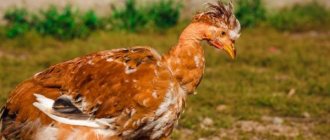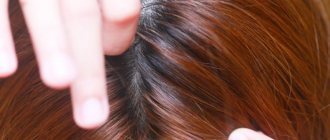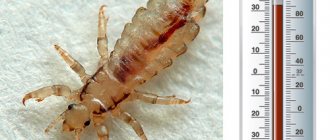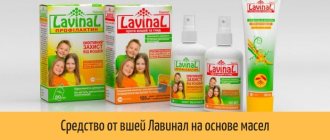Despite the increase in living standards, pediculosis is a scourge of modern society. This disease affects both children and adults and requires immediate action. The safest and most painless method of control is to remove insects manually. However, such a labor-intensive process sometimes does not always yield positive results. Today there are many chemical and folk remedies that have antiparasitic properties. Prelest varnish against lice and nits is quite capable of coping with such a problem.
Quick facts about lice:
- • Parasites cannot fly or jump; they crawl from head to head, clinging to hair using hooks located at the ends of their legs.
- • Adults lay about 5 eggs (nits), which they attach to the hair with a thick sticky substance.
- • Young lice (nymphs) hatch from the nits after 7-10 days.
- • Lice cannot survive without a host for more than 48 hours.
- • Itching with pediculosis only in 14-36% of cases
In recent years, pharmaceutical anti-pediculosis drugs have become less effective. This is because head lice have developed resistance (resistance) to the insecticides they contain. This is the main reason why many people look for unusual lice treatments, such as hair dye.
Methods of application
To get rid of lice with hairspray, you need to carry out the treatment correctly. To obtain good results, processing is performed as follows:
- first wash your hair thoroughly with regular shampoo;
- wait until the hair is dry or dry it with a hairdryer;
- apply the preparation to the strands along the entire length, paying more attention to areas near the roots;
- to achieve the desired effect, you need to use one or two bottles per procedure;
- after this, the head is covered with plastic wrap and wrapped in a towel to obtain a thermal effect;
- after eight hours, wash your hair with plenty of water and shampoo;
- Use a special comb to comb the hair to completely eliminate lice and nits.
During therapy you need to follow these recommendations.
This will help avoid unpleasant consequences. To prevent spraying and inhaling varnish from making you feel worse, apply the spray outdoors or in a well-ventilated room. It is better to put a damp cloth on your face and hold your breath as much as possible. With the help of varnish, relief is felt from the first procedure. But to prevent relapse, you can re-treat your hair after a week. Thanks to this, in just two sessions you can completely forget about the problem.
Do lice live on colored hair?
Many women are convinced that regular dyeing helps get rid of lice. But practice shows that parasites feel equally good on clean or dirty, curly or straight, natural or dyed hair.
The chemicals contained in certain types of hair dyes do have a negative effect on lice, but this requires direct exposure. If the infection occurs after dyeing, then the parasites will live and multiply in the same way as on natural hair. Lice feed on blood. The chemicals contained in paints do not penetrate into the human bloodstream, otherwise we would experience unpleasant side effects after painting. Thus, changing hair color has no effect on lice.
Folk remedies against nits and lice
In order to mechanically clean hair from parasites, you can prepare henna and apply it according to the instructions.
Henna is placed in a glass container and filled with hot water. The resulting mass is thoroughly mixed. It is important to ensure that it is not too liquid, otherwise it will drain from the hair.
It is best to use henna after treatment with a specialized anti-pediculosis pharmaceutical drug. It will kill the hated bloodsuckers, and henna will restore the hair structure.
The use of this substance to control insects is effective due to its pungent odor and pungent properties. Vinegar does not kill lice, but under the influence of a toxic substance, insects become much slower, which makes them easier to remove by mechanical means. Vinegar has no effect on parasite eggs, but it effectively destroys the adhesive substance with which the eggs are attached to the hair. This makes it easy to remove parasites even from long hair.
IMPORTANT! It is acceptable to use all types of vinegar, but it is worth remembering the concentration of the substance - it should not exceed 9%. Otherwise, the product may cause chemical burns to the skin. In order to achieve maximum effect, vinegar should be applied to the hair in the form of an aqueous solution.
To prepare it, 80 ml of vinegar is mixed with 160 warm water.
In order to achieve maximum effect, vinegar must be applied to the hair in the form of an aqueous solution. To prepare it, 80 ml of vinegar is mixed with 160 warm water.
Tar soap
The effectiveness of this product has been proven many times. Adults and nymphs are affected by the specific aroma of soap, and benzene and phenol, which are part of the product, affect nits, burning and affecting their nervous system. Before use, the bar should be grated on a coarse grater and soaked in a small amount of hot water until a homogeneous mass is obtained, resembling thick shampoo in appearance.
Kerosene
This method of combating blood-sucking insects is outdated, but its effectiveness has also been confirmed by experts. Kerosene is really harmful to parasites:
- The substances contained in the composition are poisonous to adults and larvae.
- Kerosene destroys the adhesive mass and weakens the attachment of nits to the hairs.
- The pungent odor repels insects.
If you nevertheless decide to use kerosene to fight insects, pay attention to the type of substance - it is permissible to use only lighting or technical kerosene. All other varieties are more aggressive and their use can be dangerous
Does hair dye kill lice?
Many modern paints cannot be called effective against lice. They are made from plant extracts without the addition of toxic substances. To kill parasites, you must choose paint that contains powerful chemicals. They usually contain two components: ammonia or hydrogen peroxide. It was previously thought that both of these ingredients could kill lice. But that's not true. In recent years, parasites have become completely immune to hydrogen peroxide.
Ammonia paint has a certain anti-pediculosis activity. Ammonia is a caustic, alkaline substance that can kill lice with prolonged exposure. But ammonia is not effective against nits, which are protected by a dense shell. Therefore, if you decide to use hair dye against lice, you need
- 1. Be sure to buy paint that contains ammonia.
- 2. Leave the dye on your hair for at least 40 minutes.
- 3. After the coloring procedure, comb your hair thoroughly with a fine-tooth comb.
Since even ammonia paint is not effective against nits, the staining procedure will have to be repeated after 7-10 days.
How to dye
In order for hair coloring to help in the fight against head lice, first of all you should choose the necessary composition of the product. You need to carefully read the instructions for the content of hydrogen peroxide or ammonia in the paint. The most effective shades to achieve the desired goal will be blonde shades.
Next, you should check for hypersensitivity to components. If there is no redness or itching, then you can start coloring. The procedure should proceed as follows:
- It is prohibited to use expired medication;
- It is necessary to prepare the coloring mixture in strict compliance with the dosages specified in the instructions;
- before starting the procedure, you should wash your hair, dry it and remove dead insects using a comb;
- Next, you need to distribute the hair into strands and treat each of them with the prepared dye;
- put on a hat. If it is not there, then you can use a plastic bag;
- wrap yourself in a towel on top. This is necessary to create a greenhouse effect, which helps kill lice;
- leave the coloring agent for half an hour;
- then wash off the dye with detergent and warm water;
- Rinse your hair with lemon solution. To do this, dilute the juice of 1 lemon in 1.5 liters of warm water;
- dry your hair with a hairdryer;
- comb out nits and dead lice.
Important! You should dye your hair no more than twice a month. If after the first dyeing it was not possible to completely get rid of lice, then it is necessary to use other methods, since the dye can cause significant damage to the hair.
Hair dye: pros and cons (contraindications) of this method
Anti-lice hair dye has the only advantage - it is the ability to combine the dyeing procedure with anti-lice treatment. However, one should take into account the fact that the effectiveness of paint against parasites directly depends on the amount of ammonia it contains. And the more ammonia in the dye, the higher the risk of negative effects on the hair and scalp.
Dermatologists do not recommend using hair dye to treat head lice in children. During childhood, hair is much thinner and more vulnerable to damage from chemicals contained in coloring products. Children are also more prone to allergic reactions, the consequences of which can be very severe.
Additional disadvantages of this method of treating head lice include:
- • Repeated dyeing leads to weakening of hair
- • Hair dye does not kill nits
- • Hair dye is often more expensive than pharmacy anti-lice medications
- • Frequent dyeing significantly increases the risk of an allergic reaction.
In addition, coloring can complicate the process of getting rid of lice. Insects and nits become the same color as your hair, making them almost undetectable.
Drug price
Lacquer Prelest is quite inexpensive. The average price for a cylinder of the product in Russia is about 190 rubles. Based on these prices, we can calculate that the entire course of treatment will cost an average of 190 to 760 rubles. It all depends on how long your hair is and how many times you want to apply the treatment.
For short hair, treatment in one session will cost 190 rubles, two sessions 380 rubles. If the hair is very long, then one procedure will cost 380 rubles, and two – 760 rubles. Compared to pharmaceutical products, treatment with Prelest will cost several times less.
What safety methods should be used with this method of getting rid of lice?
Despite the fact that many of us consider the dyeing process a routine procedure, we should not forget about the safety rules:
- 1. Before the procedure, check the paint for an allergic reaction. To do this, apply a small amount of paint to the skin of your hand (elbow area or wrist) and leave for 12 hours. If during this time no signs of allergy appear - itching, swelling, redness - the paint can be used.
- 2. Carefully examine your scalp before the procedure. Do not use hair dye if there are wounds on the scalp that appeared after combing lice bites. When chemicals get into these wounds, they can cause burns or allergies.
- 3. Use disposable gloves to protect your hands
- 4. Be careful not to get the coloring agent in your eyes or mouth.
- 5. Avoid inhaling paint fumes. Carry out the procedure in a well-ventilated area.
As mentioned above, ammonia paints should not be used to treat lice in children.
Contraindications
No matter how safe Prelest hairspray is, it has its limitations in use. There are certain contraindications to using the drug to treat head lice:
- Children under 3 years of age. In this case, you should consult a pediatrician or pediatric dermatologist. Only after their permission can you treat lice in a child using Prelest varnish. You will find a review of the best lice and nits remedies for children on our website.
- Pregnancy. During pregnancy, a woman's hormonal background changes and there is a possibility of an allergic reaction to any component in the varnish. Also, inhaling harmful fumes when spraying varnish can negatively affect the condition and development of the child. Find out more about the treatment of head lice during pregnancy on our website.
- Allergy. People suffering from hypersensitivity and respiratory problems should avoid using Prelest varnish to treat head lice.
Alternative Treatments
All methods of getting rid of lice can be divided into three main groups:
- • Mechanical removal. This method involves removing live parasites and nits manually. To do this, take a fine-toothed comb and comb your hair thoroughly. The advantage of this method is that it is absolutely safe. Disadvantage: you will have to spend a lot of time and effort to completely get rid of lice.
- • Home remedies. There are a huge number of lice recipes that can be used at home. These include: essential oils, kerosene, mayonnaise, olive oil, vinegar and many others. The main disadvantage of these methods is low efficiency. In most cases, treatment is delayed and ultimately the insects have to be removed mechanically. The advantages include financial savings - most ingredients can be found in every kitchen
- • Pharmacy drugs. Today you can find a wide range of pediculicides in pharmacies. These can be shampoos, emulsions and sprays. The undoubted advantage of using pharmaceutical products is that they are all pre-tested and are considered relatively safe. The downside is that lice have become resistant to insecticides, so many drugs are simply ineffective.
Advantages of the product
This method of treating pediculosis has many advantages:
- efficiency - the use of a fixing solution guarantees the complete destruction of lice and nits;
- safety – absence of toxic substances in the varnish;
- low cost compared to pharmacy pediculicidal drugs (the price of Prelest varnish is within 180 rubles);
- easy way to use.
How to get rid of lice without unnecessary problems?
The main problem in the treatment of head lice is that lice quickly adapt to toxic substances (insecticides) and stop responding to them. "Paranit" has a fundamentally new mechanism of action. They contain dimethicone and mineral oil.
Dimethicone is a silicone-based polymer that is found in many cosmetics. It helps moisturize the skin, creating a thin barrier. So why did this substance, safe and beneficial for humans, become destructive for parasites?
The answer lies in the life activity of lice. They have seven openings (spiracles) on each side of the body that merge into the trachea. The tracheae branch and form a thin network that supplies insects with oxygen. Through the same network they remove excess fluid after drinking blood. Due to the high surface tension of water, it does not penetrate the microscopic spiracles. And dimethicone copes with this task. It tightly clogs the respiratory system of lice, depriving them of oxygen and disrupting their water balance. This substance also affects nits in the same way - without the ability to breathe, they die.
Since dimethicone and mineral oil are non-toxic substances, Paranit anti-pediculosis products can be used to treat children from 3 years of age, and Paranit Sensitive lotion is suitable for children from 1 year of age and pregnant women. In addition, the processing can be repeated many times. Paranit products are available in various forms, and therefore are suitable for treating all family members. This is a simple and effective way to deal with an unpleasant problem without risk to health.
Pediculosis
As mentioned above, lice are representatives of lice that pierce the skin with their mouthparts and suck out blood. Depending on the type of lice, they can live on animal carriers or on human skin, the latter in the biological classification are called Pediculus humanus.
This is what lice look like on your hair
If we talk about those representatives of the genus that happily live on human skin, they can be divided into three main groups: head, body and pubic lice.
Causes of lice
It is a mistaken belief that unscrupulous people suffer from lice. Lice have their own opinion on this matter and they prefer a clean scalp, through which it is much easier to suck blood.
Lice do not choose their victims, they do not care about nationality, gender or origin, their main goal is nutrition and reproduction
The main method of transmission of the disease is direct contact with an infected person or his clothing. Pubic lice are mainly transmitted through sexual contact, less commonly through household contact. Lice cannot be contracted from an animal, since their parasitism occurs only on humans.
When parasites come into contact with the skin, a reproductive cycle begins, during which females lay nits (eggs), gluing them to the hairs. The appearance of new insects will not be long in coming; within ten days their number will increase several times, and after another two weeks the “young animals” themselves will begin to lay eggs.
Lice multiply so quickly that within a few weeks they will completely infest the scalp.
Pay attention to symptoms
The first symptoms appear several days after the direct infection and appear:
- severe itching of the skin;
- small grayish spots at the bite sites, which, after scratching, can take the form of a pustular formation;
- a large number of nits, which are similar in appearance to dandruff.
This is what a louse larva looks like attached to a hair
If you ignore the need to treat head lice, hair lice can cause swollen lymph nodes behind the ears, bacterial infections, and rotting of the scalp.
Efficiency
Many people assume that dyeing your hair is enough and the lice will die. But a one-time procedure will not bring results. It has been proven that the dyeing method helps to partially get rid of parasites.
Dyeing your hair three times is considered optimal. The break is approximately a week.
Important! Regular dyeing has a negative effect on the scalp. The protective layer loses its strength, the hair loses its healthy, vibrant appearance.
Dye is a compound of chemical elements that negatively affects hair when used regularly.
To effectively get rid of parasites:
- distribute the chemical over the entire surface of the head, each strand must be treated carefully;
- put a plastic bag or cap on your head;
- wrap your head with a towel;
- let the paint set for 30-45 minutes;
- To wash off paint, use water at room temperature and use a vinegar solution. To prepare it you will need 0.2 liters of vinegar and 0.5 liters of water.
Peroxide works better under such conditions. Thanks to the vinegar solution, it is much easier to comb your hair and get rid of nits and lice.
Mechanical method - combing
This is a simple but very effective option for getting rid of parasites.
The method is completely harmless, therefore it is recommended for pregnant and lactating women, as well as children and anyone suffering from allergies. An anti-lice hair comb will do a good job of combing out parasites from washed, damp strands. Then, to avoid relapses, we repeat combing every 3 days for 2 weeks.
The sequence of such treatment
- Wash your hair with shampoo, pat the locks dry with a towel and apply conditioner.
- Now use a large comb to straighten the long curls, and then comb them repeatedly with a fine-toothed, wet comb.
- The moisture and conditioner will cause all the lice to become lethargic and get stuck in the teeth of the comb.
- Vinegar for hair against lice will help at this stage. We will moisten the comb with it, and then clean the hair from insect fragments with it.
- Wash your hair with shampoo again.
- Then dry your curls with a towel.
- Use a large comb to organize the long strands and, to control them, go through them with a fine-toothed comb.
This procedure is necessary for all infected people in the family.
We do the course at three-day intervals for half a month. This way we guarantee ourselves absolute freedom from parasites, because we will eliminate young larvae in a timely manner.
Remedy No. 1
AntiV prophylactic comb will get rid of lice on long curls.
- Long and frequent teeth made of medical steel will comb out even the smallest nits, because their interval is half that of the smallest nit.
- Withstands boiling and exposure to anti-pediculosis medications.
The comb is eternal, harmless, effective.
- Available in pharmacies and online. Price – about 1500 rubles.
- Rounded teeth with a laser notch do not scratch the head, but perfectly hold live insects and destroy the shell of the larva.
- AntiV does not break or pull out hairs, does not cause allergies or dandruff.
- Let's run it down the strands from the roots themselves and see if there is a problem. After all, newly deposited nits are located right at the roots.
Compound
The paint contains elements that affect parasites.
When paint interacts with nits, a chemical reaction occurs. At this time, the chitinous shell of the insect is affected (the chemical composition of the paint corrodes it). Due to the action of the active substances of the oxidizer, paint vapors destroy the respiratory organs of lice and the adhesive substance.
After completing the procedure, comb the entire treated surface several times.
When choosing a paint, be sure to pay attention to the composition of the paint; it must contain oxidizing agents. For example, hydrogen peroxide, ammonia. Only then will you notice the positive effect.
More than 75% of lice are destroyed after the first application of hair dye.
Note! If the paint was prepared incorrectly, this will cause skin injuries in the form of redness or burns.
Lice prevention methods
Basic measures you can take to prevent the spread of lice to children and adults in your family:
- Do not share personal hygiene items (combs, towels).
- Avoid activities that result in head-to-head contact.
- Store items, especially outerwear, away from common areas such as closets.
If you have lice, try not to be embarrassed. This is not a sign of illness or that you or your child are dirty. Tell friends and teachers to check on their children and stop the spread of these pests.
- about the author
- VK profile

